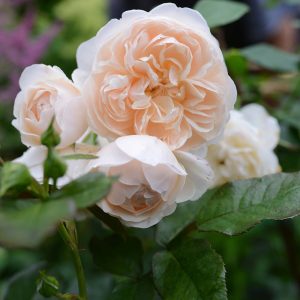Description
Hosta is a popular perennial plant that is known for its beautiful foliage and tolerance for shade. With a wide range of leaf shapes, sizes, and colors, Hostas can add texture and interest to any garden. These plants produce beautiful flowers on tall spikes in the summer, which range in color from white to lavender. Hostas are great for planting in shaded areas or under trees, and they pair well with other shade-loving plants like ferns, astilbes, and hellebores. They are also a great choice for container gardening or for edging walkways. With so many varieties to choose from, there is a Hosta for every garden style and preference.
Key Facts
- Common Name(s):Gold edged Plantain lily
- Hardiness:Fully hardy
- How big will I get? Hosta fortunei ‘Aureomarginata’ can grow to a height of 1m and a spread of 1m.
- Did You Know That:In Japan Hostas are known as gibōshi.
Plant Calendar
A rough guide to how this plant will change through the year.
| Jan | Feb | Mar | Apr | May | June | July | Aug | Sept | Oct | Nov | Dec | |
| Flowering Time |  |
 |
||||||||||
| Foliage Colour |   |
  |
  |
  |
  |
  |
  |
  |
  |
| J | F | M | A | M | J | J | A | S | O | N | D |
 |
 |
||||||||||
  |
  |
  |
  |
  |
  |
  |
  |
  |
Care Guide

Soil Requirements
Hosta fortunei ‘Aureomarginata’ prefers moist but well-draining soil. This plant can grow in soil with a wide range of pH levels, it is not picky about the pH level of the soil.

Best Position
Hosta fortunei ‘Aureomarginata’ prefers a sheltered position and likes the sun but not too much of it, so an area that is partially shaded is perfect.

Maintenance
Hosta fortunei ‘Aureomarginata’ can be cleaned up through the season and then remove any damaged foliage at the end of the growing season.

Pest, Diseases and Wildlife
Hosta fortunei ‘Aureomarginata’ can have problems with slugs and snails, it can be vulnerable to certain diseases such as virus’. It is also known to attract bees. It is toxic to cats, dogs and horses.





